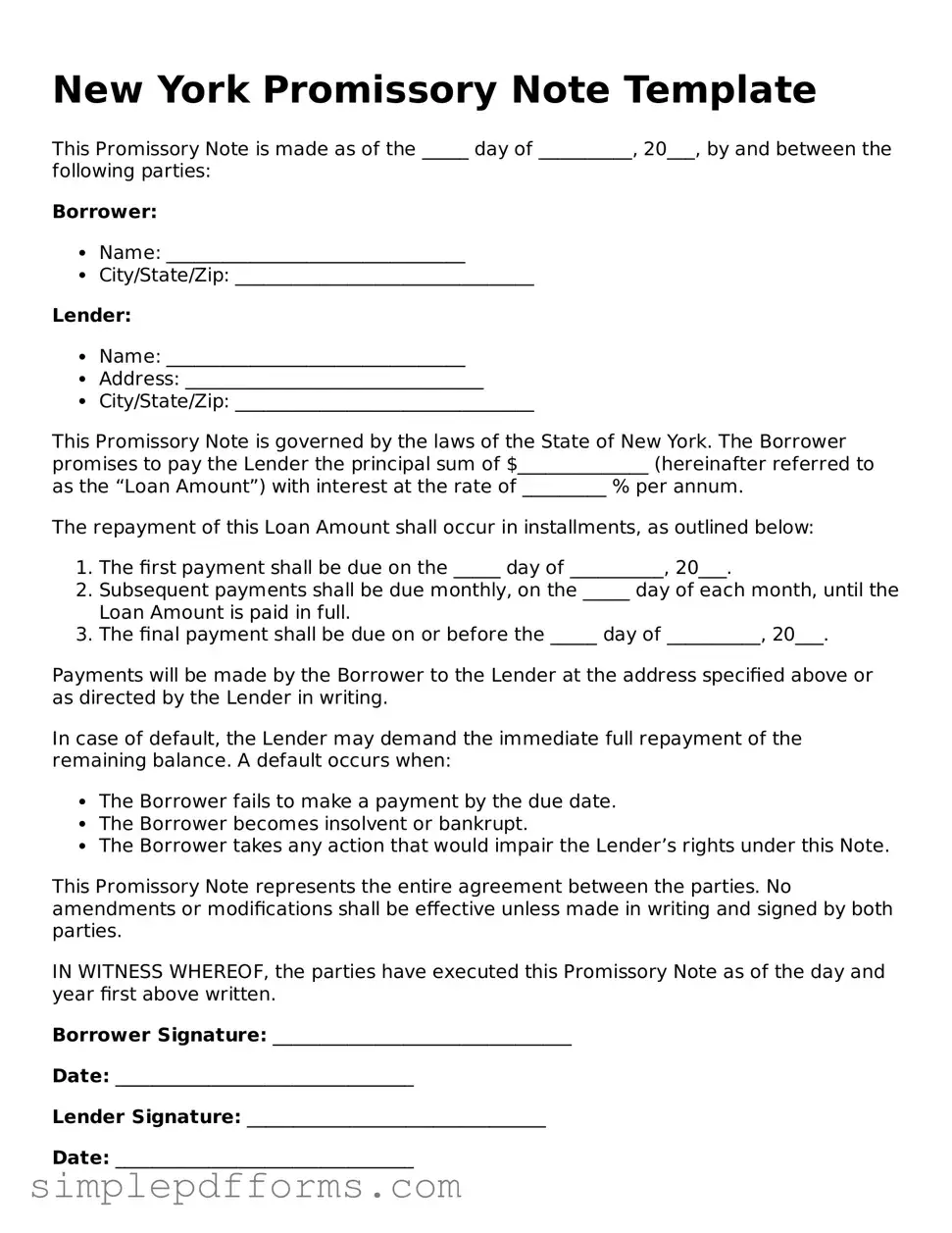New York Promissory Note Template
This Promissory Note is made as of the _____ day of __________, 20___, by and between the following parties:
Borrower:
- Name: ________________________________
- City/State/Zip: ________________________________
Lender:
- Name: ________________________________
- Address: ________________________________
- City/State/Zip: ________________________________
This Promissory Note is governed by the laws of the State of New York. The Borrower promises to pay the Lender the principal sum of $______________ (hereinafter referred to as the “Loan Amount”) with interest at the rate of _________ % per annum.
The repayment of this Loan Amount shall occur in installments, as outlined below:
- The first payment shall be due on the _____ day of __________, 20___.
- Subsequent payments shall be due monthly, on the _____ day of each month, until the Loan Amount is paid in full.
- The final payment shall be due on or before the _____ day of __________, 20___.
Payments will be made by the Borrower to the Lender at the address specified above or as directed by the Lender in writing.
In case of default, the Lender may demand the immediate full repayment of the remaining balance. A default occurs when:
- The Borrower fails to make a payment by the due date.
- The Borrower becomes insolvent or bankrupt.
- The Borrower takes any action that would impair the Lender’s rights under this Note.
This Promissory Note represents the entire agreement between the parties. No amendments or modifications shall be effective unless made in writing and signed by both parties.
IN WITNESS WHEREOF, the parties have executed this Promissory Note as of the day and year first above written.
Borrower Signature: ________________________________
Date: ________________________________
Lender Signature: ________________________________
Date: ________________________________
